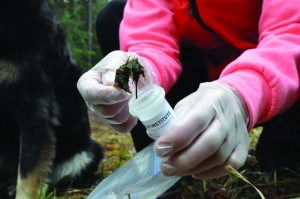
To Norway that is! Last summer, more than 40 volunteers gathered over 120 samples from Jasper National Park’s black and grizzly bear populations. These samples will help Parks Canada find out more about black and grizzly bear populations in the park and eastern slopes. Understanding the distribution, movement and behaviour of bears is important as we strive to gather data that will help us protect these iconic species.
Why Scat? The DNA found in a scat sample can help Parks Canada, fRI Research and other land managers in Alberta to identify a few important things about bears in this area:
How healthy are they: Are they eating well and what are they eating?
Family make-up: Whose cubs are related to whom?
Distribution: Whose bear relatives are living where?
Populations: Are the samples coming from the same bear?
In 2015, scat seekers completed their volunteer efforts in September and brought Parks Canada their final samples. They were gathered up, each one recorded into a database and sent off to the Norwegian Institute of Biotechnology.
When they arrived in Norway, they were added to the line with other scat sample studies from around the world to be put through a process called genotyping.
The first step is to isolate the DNA by dissolving away everything else in the scat samples. Genotyping involves checking short sections of the bears’ DNA in several places. It’s very unlikely that more than a couple of those sections of DNA will be identical just by chance, so the more times they match, the more closely related the bears must be. If two samples have exactly the same genotype—all the sections match perfectly—then researchers can be very certain that it’s the same bear.
Parks Canada will analyze the information that comes back from Norway to help better understand Jasper’s bear population.
The public, like these 40 volunteers, can assist Parks Canada in its work with wildlife. If you would like to be a volunteer for various opportunities or get your name on our volunteer list by emailing [email protected].
